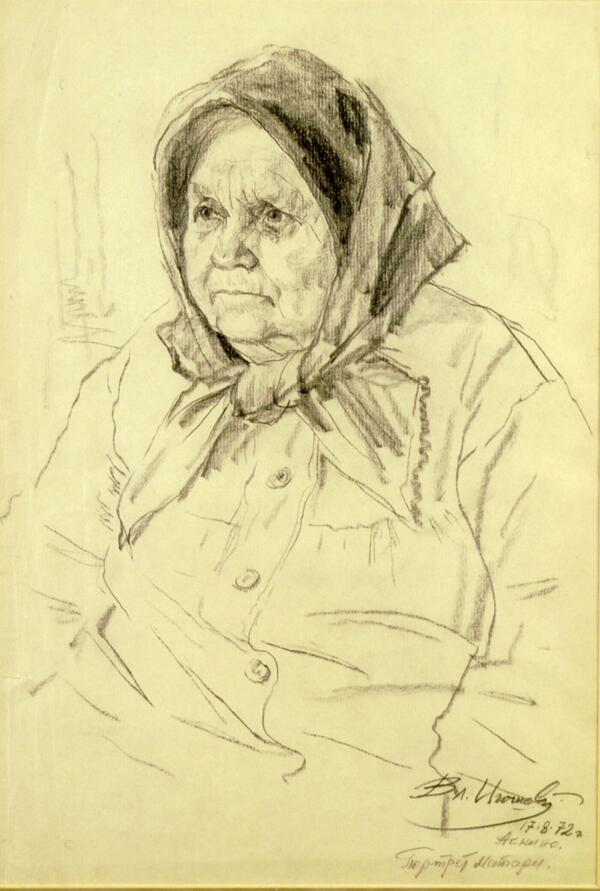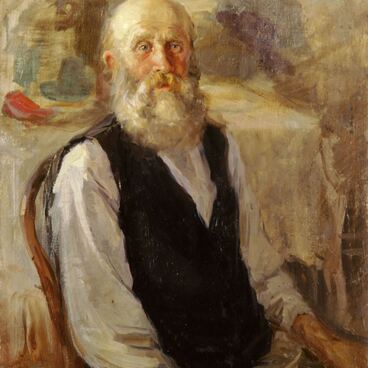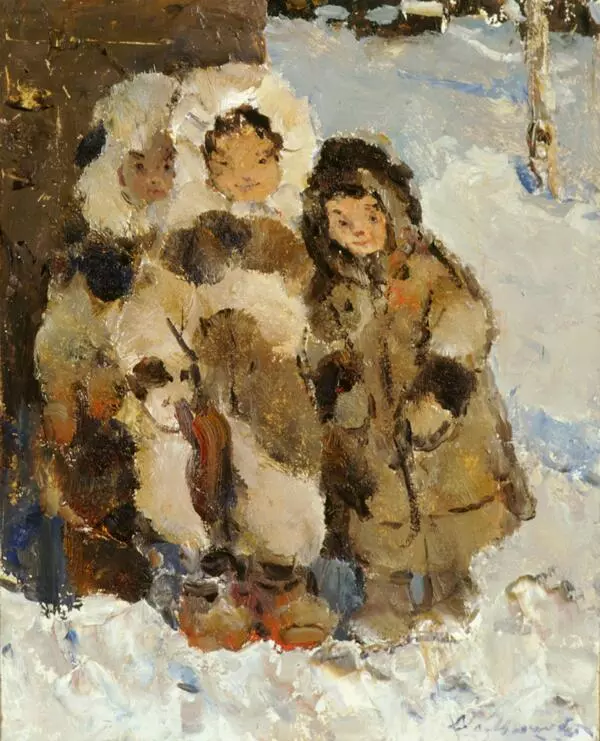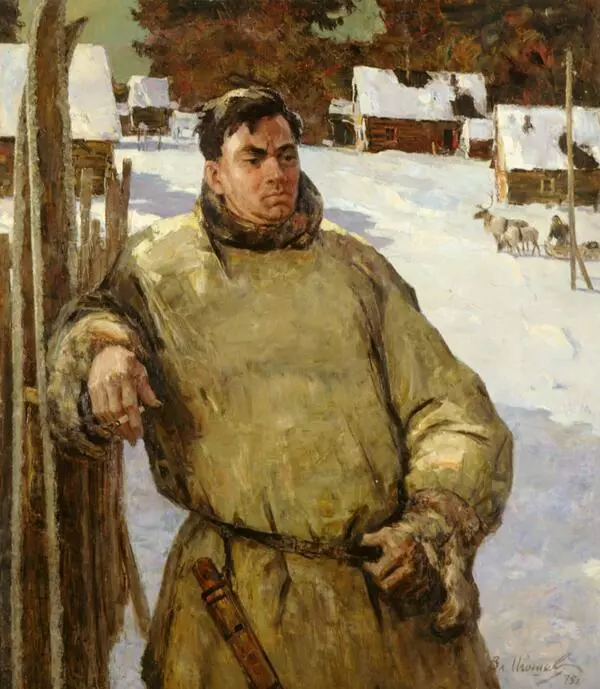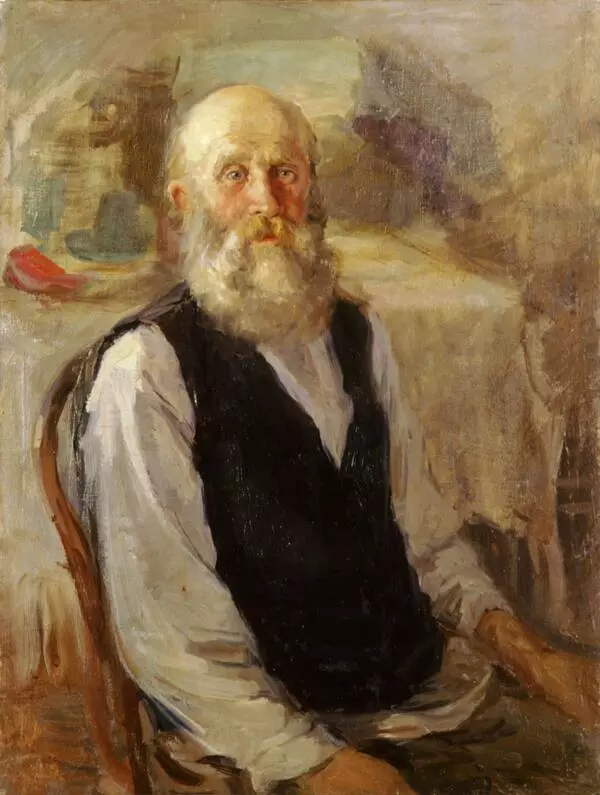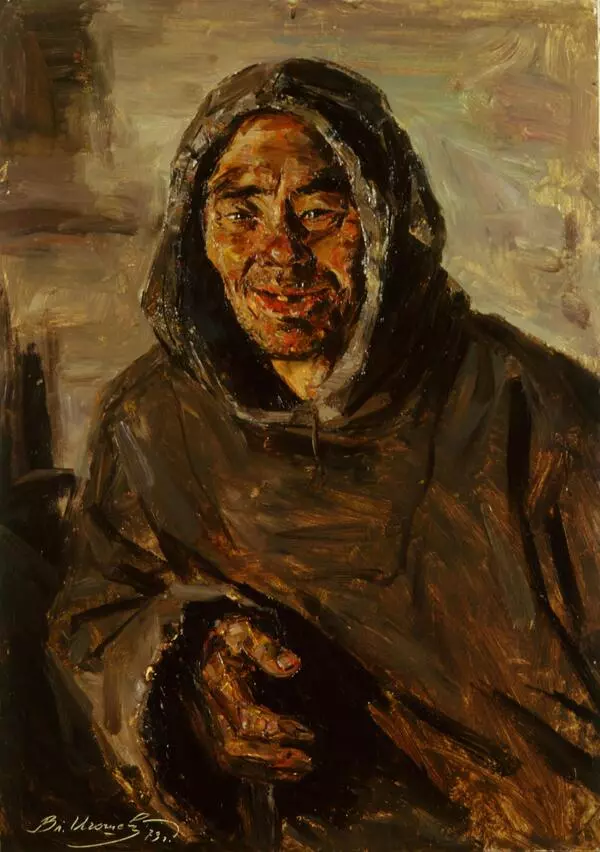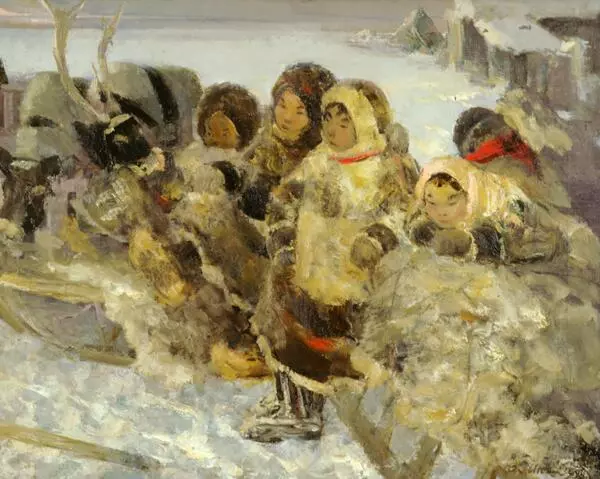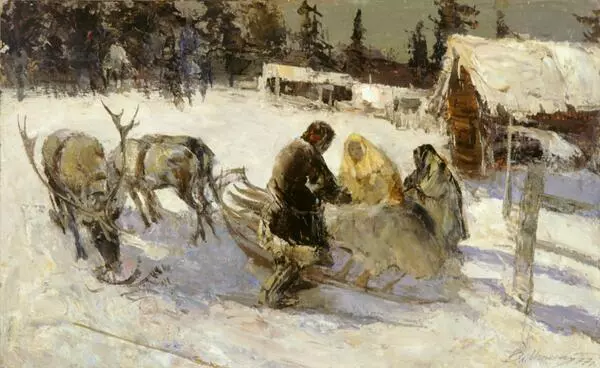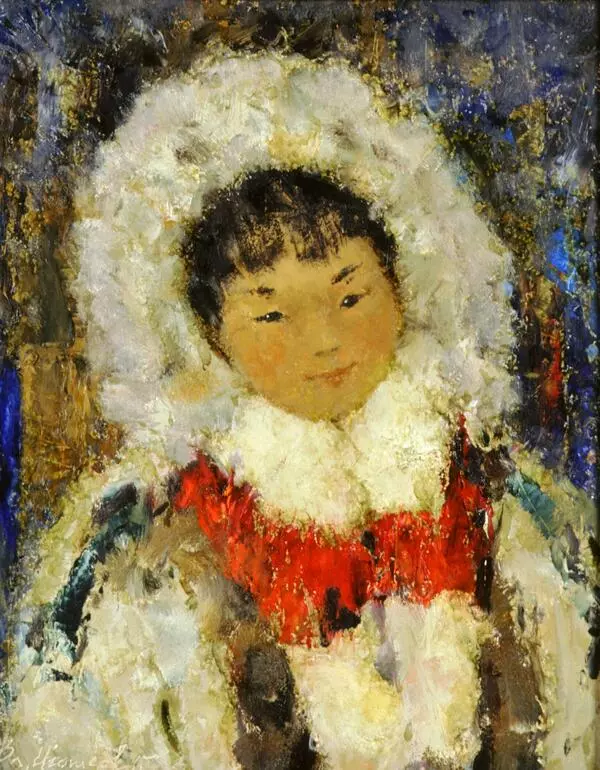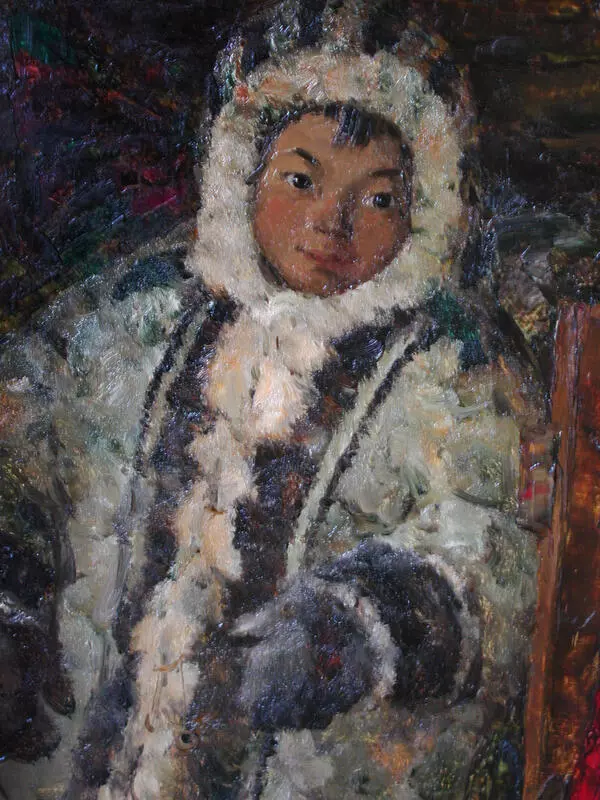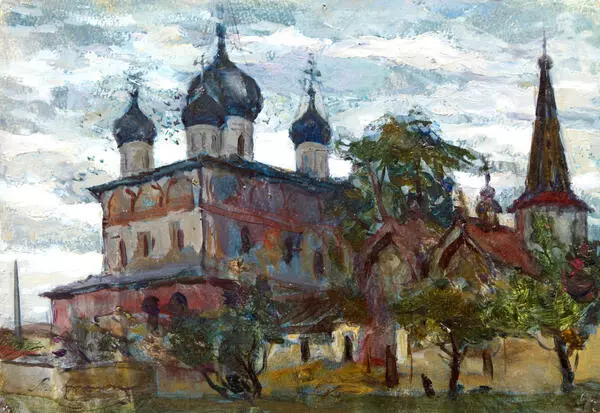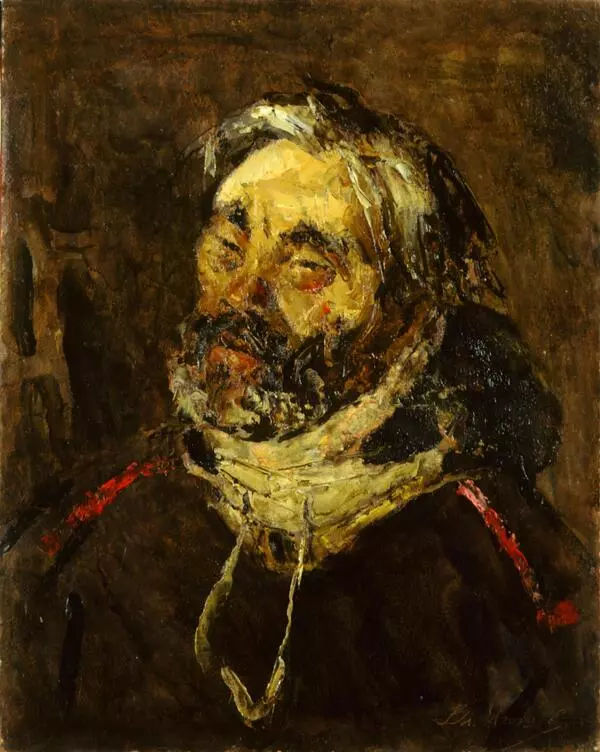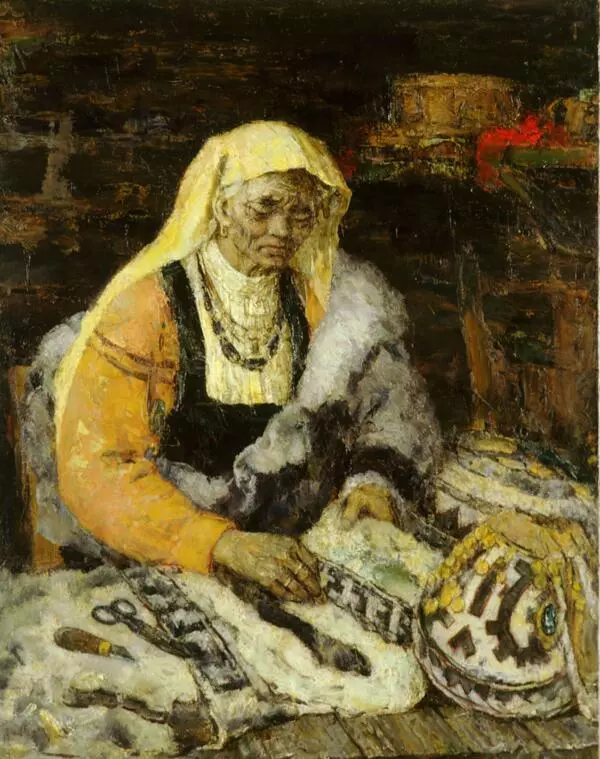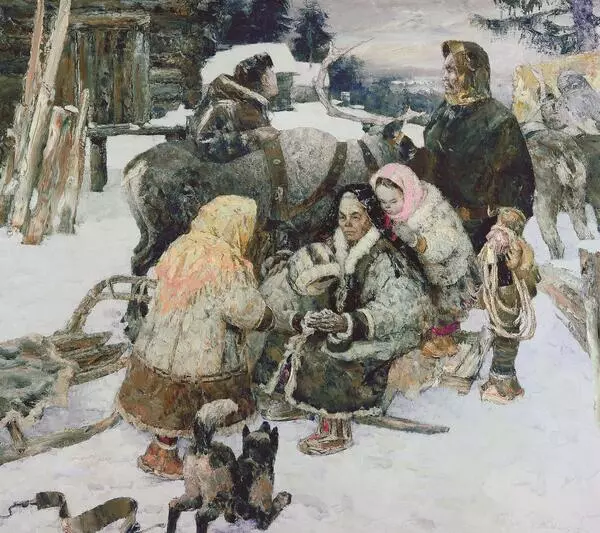The People’s Artist of the USSR Vladimir Igoshev studied in Ufa at the Arts Faculty of the Ufa College of Arts. In 1950 Vladimir Igoshev graduated from The Surikov Art Institute in Moscow. In 1968 Igoshev moved to Moscow and soon became a professor of Moscow Architectural Institute and Moscow State Pedagogical University.
Vladimir Igoshev worked in various genres: he painted portraits and self-portraits, worked on landscapes and genre paintings. In 1982 the artist won the State Prize of Russia named after I. E. Repin. Works by Igoshev are in the collections of The State Tretyakov Gallery, The Russian Museum, in the art collections of Kiev, Tashkent, Baku and in the private collections.
The portrait of the artist’s mother Olga Filippovna Igosheva was drawn in 1972. It’s a pencil sketch, where the artist was focused on the depiction of the face framed with the kerchief. The solid and yet hunched figure is depicted with the help of just a few lines. The face with deep wrinkles and droopy eyelids was drawn graphically. The woman’s unfaltering gaze, compressed lips and outlined chin are indicative of her strong character.
The drawing was made with graphite pencil. In general, there are two techniques of pencil drawing: lines and hatchwork, tones and colours. Here the pencil work was done with the help of the contour line and hatching. The line is one of the means of expression and the main graphic element of the linear graphics. Lines are used in the sketches, drawings, studies, caricatures, architectural and design projects. The artist uses hatchwork in order to give the feeling of volume and lighting in the drawing. When using such a technique, a painter makes a tonal elaboration of the sheet of paper. There are eight main types of hatchwork, which can be seen in the classical drawings. While working with the tonal drawing, an author usually uses hatching, which repeats the shape of an object. The saturation can be changed with the help of different means, such as pencil pressure force and quantity of layers.
Vladimir Igoshev worked in various genres: he painted portraits and self-portraits, worked on landscapes and genre paintings. In 1982 the artist won the State Prize of Russia named after I. E. Repin. Works by Igoshev are in the collections of The State Tretyakov Gallery, The Russian Museum, in the art collections of Kiev, Tashkent, Baku and in the private collections.
The portrait of the artist’s mother Olga Filippovna Igosheva was drawn in 1972. It’s a pencil sketch, where the artist was focused on the depiction of the face framed with the kerchief. The solid and yet hunched figure is depicted with the help of just a few lines. The face with deep wrinkles and droopy eyelids was drawn graphically. The woman’s unfaltering gaze, compressed lips and outlined chin are indicative of her strong character.
The drawing was made with graphite pencil. In general, there are two techniques of pencil drawing: lines and hatchwork, tones and colours. Here the pencil work was done with the help of the contour line and hatching. The line is one of the means of expression and the main graphic element of the linear graphics. Lines are used in the sketches, drawings, studies, caricatures, architectural and design projects. The artist uses hatchwork in order to give the feeling of volume and lighting in the drawing. When using such a technique, a painter makes a tonal elaboration of the sheet of paper. There are eight main types of hatchwork, which can be seen in the classical drawings. While working with the tonal drawing, an author usually uses hatching, which repeats the shape of an object. The saturation can be changed with the help of different means, such as pencil pressure force and quantity of layers.

